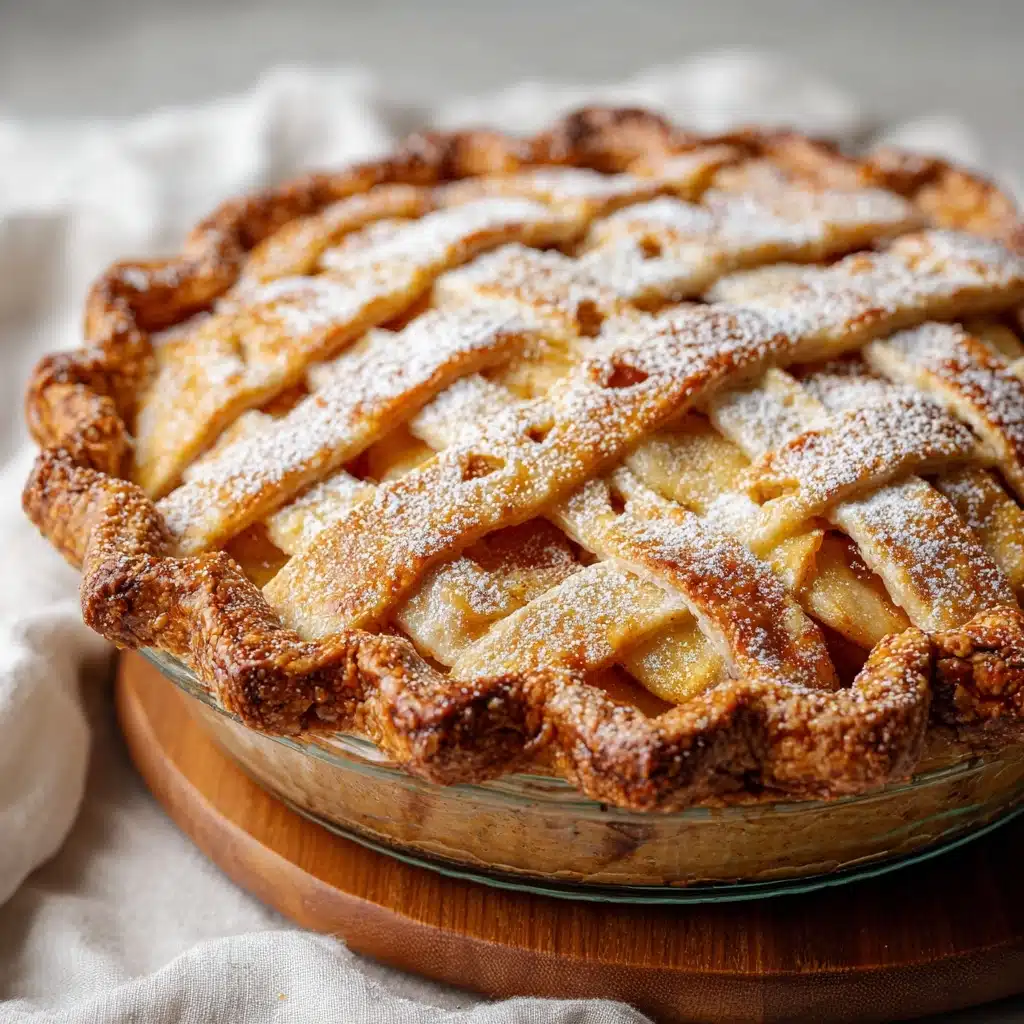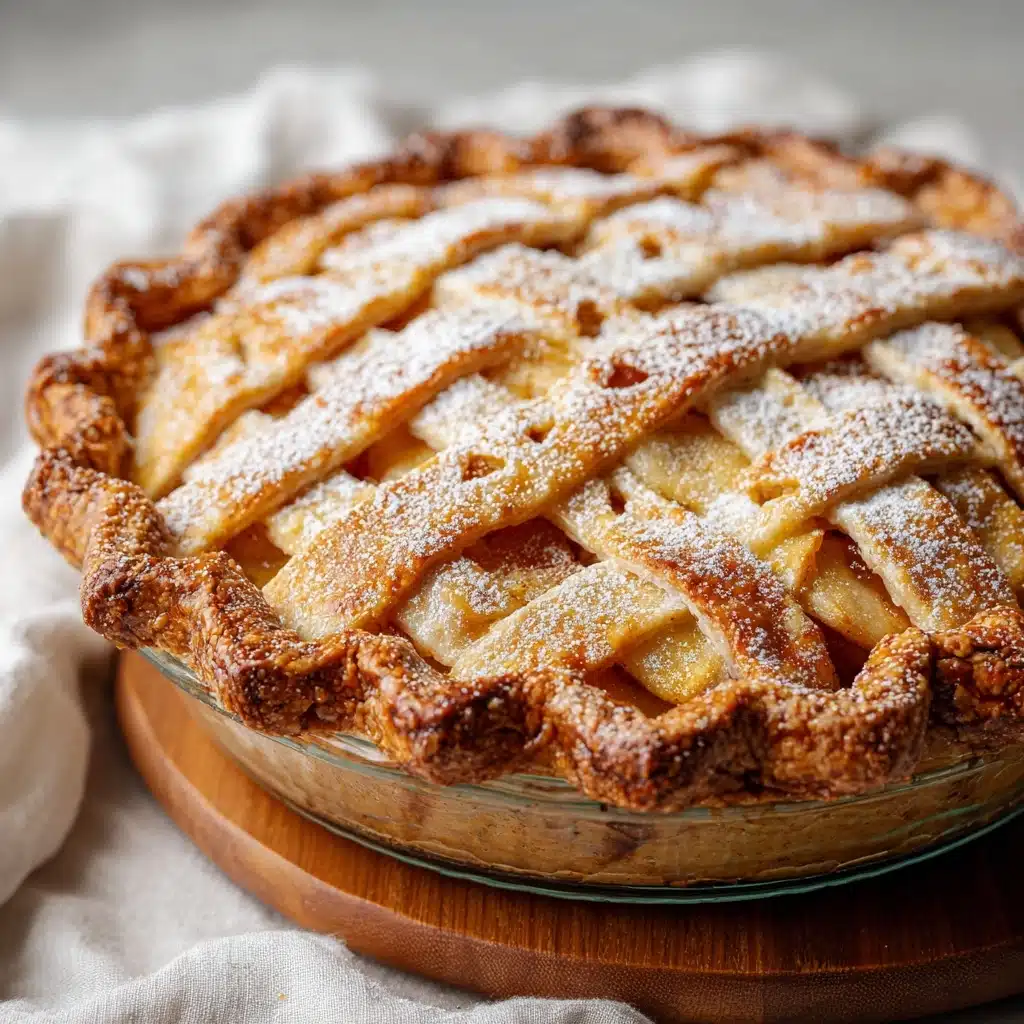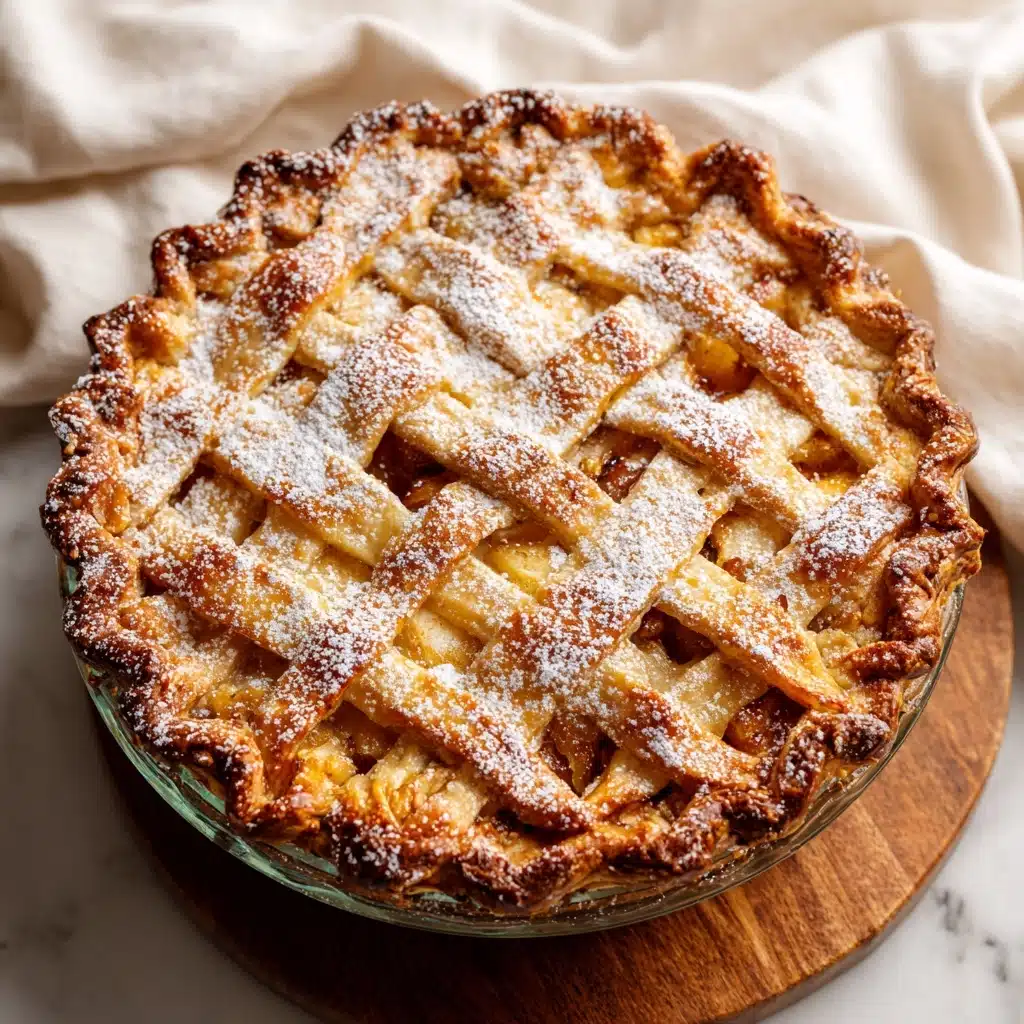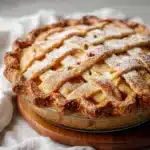If ever there was a dessert that truly tasted like springtime in Naples, it’s Pastiera (Italian Easter Pie). This gorgeous, fragrant pie wraps up creamy ricotta, delicate wheat berries, zesty orange, and a hint of vanilla all in a delicate lattice crust. A single slice of this celebratory treat tells a story of tradition, family gatherings, and the joy of waiting for flavors to bloom. In my kitchen, making Pastiera (Italian Easter Pie) marks the start of a new season—floral, sweet, and a little bit magical.
Ingredients You’ll Need
The ingredients for Pastiera (Italian Easter Pie) are simple, yet each one plays a starring role in creating an authentic flavor and that signature, lightly spiced aroma. Don’t skip or skimp—every component adds to its unique taste and unforgettable texture.
- All-purpose flour: The foundation of a tender, buttery crust that holds everything together.
- Granulated sugar: Adds balanced sweetness to both the crust and the creamy filling.
- Salt: Just a pinch in the crust boosts all the other flavors to life.
- Unsalted butter (cold, cubed): Essential for that flaky, melt-in-your-mouth pastry shell.
- Large eggs: They enrich the crust and help set the luscious filling.
- Cold water: A trickle brings your pastry dough to the perfect texture—don’t overdo it!
- Cooked wheat berries (or pre-cooked wheat for pastiera): These give Pastiera (Italian Easter Pie) its signature chew and a lovely, subtle nutty note.
- Whole milk: Used to gently cook the wheat, making it creamy and tender.
- Ricotta cheese: Be sure it’s fresh and well-drained for the silkiest filling.
- Vanilla extract: A touch brings warm undertones throughout the pie.
- Orange blossom water: The secret to Pastiera’s evocative, floral aroma—don’t skip it!
- Grated orange zest: Brightness and a pop of color that instantly lifts the filling.
- Ground cinnamon: For a gentle spice that rounds out the sweet, citrusy notes.
- Candied orange peel (diced): You’ll love these chewy bursts of citrus tucked in every bite.
How to Make Pastiera (Italian Easter Pie)
Step 1: Prepare the Pastry Dough
Start your Pastiera (Italian Easter Pie) by whisking together flour, sugar, and salt in a large bowl. Cut in the cold, cubed butter with a pastry cutter (or your fingers if you’re feeling rustic) until the mixture looks crumbly like coarse sand. Add the eggs and stir until a dough begins to form, drizzling in a tablespoon or two of cold water if needed. Don’t overwork the dough—stop when it just holds together. Shape it into a disk, wrap in plastic, and let it rest in the fridge for at least 30 minutes. This chilling step makes the pastry easier to handle and extra flaky in the oven.
Step 2: Cook the Wheat Mixture
Place your cooked wheat berries (or classic pre-cooked wheat for pastiera) in a small saucepan with milk and that all-important pat of butter. Over medium heat, stir often until the wheat absorbs the milk and the mixture thickens slightly—this takes about 10 minutes. You’ll notice the grains become beautifully creamy, almost like a pudding. Set aside to cool, as adding it hot would scramble your eggs in the filling.
Step 3: Mix the Luscious Ricotta Filling
In a large mixing bowl, beat the ricotta with sugar, eggs, vanilla extract, orange blossom water, grated orange zest, and cinnamon until the mixture is smooth and luminous. Once the wheat mixture is cool, gently fold it in along with the candied orange peel. The result? A filling that’s floral, citrusy, and flecked with irresistible bursts of sweet, chewy orange.
Step 4: Assemble the Pie
Roll out two-thirds of your pastry dough on a lightly floured surface to line a 9-inch deep-dish pie pan. Press the dough gently but firmly to ensure no air bubbles. Pour in the dreamy ricotta–wheat filling and smooth the top. Now, with the remaining dough, roll out and slice into strips to form a criss-cross lattice. Lay these carefully over the pie, then trim and press the edges to seal. The lattice isn’t just traditional—it lets you peek at the golden, aromatic filling as it bakes.
Step 5: Bake and Cool
Slide your assembled Pastiera (Italian Easter Pie) into a preheated 350°F (175°C) oven. In about 55 to 65 minutes, the crust will become golden and the center set and gently puffed. Resist the urge to cut in right away! Cool the pie completely. Traditionally, it’s served at room temperature the next day, letting the flavors mingle into perfection overnight.
How to Serve Pastiera (Italian Easter Pie)

Garnishes
For a rustic, elegant finish, simply dust your Pastiera (Italian Easter Pie) with a veil of powdered sugar. Want something extra-special? Add some thinly sliced candied orange peel or a sprinkle of extra orange zest on top. These touches echo the filling and make each slice shine a little brighter.
Side Dishes
This exquisite dessert is often enjoyed all by itself, but it pairs beautifully with a bit of good, strong espresso or a delicate glass of dessert wine. If you’re serving a festive table, try adding a fruit salad or a light drizzle of honey over each slice to complement its subtle sweetness.
Creative Ways to Present
Pastiera (Italian Easter Pie) shines as a whole centerpiece but can also be cut into small bars for a buffet or picnic setting. For an extra-personal touch, bake mini pastiere in individual tart pans, perfect for sharing in a springtime brunch spread. Don’t forget to showcase the pretty lattice and flecks of orange rind—it’s what makes this dessert unmistakable!
Make Ahead and Storage
Storing Leftovers
Leftover Pastiera (Italian Easter Pie) keeps like a dream. Cover any remaining slices with plastic wrap or store them in an airtight container. You can leave them at cool room temperature for up to 2 days, but if you plan to keep them longer, pop them in the fridge for up to 5 days. The flavors will only deepen with time.
Freezing
You can freeze Pastiera with great results. Once completely cooled, wrap the pie (or individual slices) tightly in plastic wrap followed by foil. Store in your freezer for up to 2 months. Thaw overnight in the fridge before serving, and you’ll find the texture almost as lovely as fresh-baked.
Reheating
While traditionally enjoyed at room temperature, you can gently reheat slices in a low oven (about 300°F/150°C) for 10–15 minutes. This brings back some of that just-baked fragrance without drying out the filling. Avoid microwaving, which can make the delicate pastry tough.
FAQs
Can I make Pastiera (Italian Easter Pie) without wheat berries?
Absolutely! While wheat berries are traditional, you can use pre-cooked farro, pearl barley, or even short-grain rice in a pinch. Each brings its own slight twist, but the result is still delightful.
Is it necessary to use orange blossom water?
For authenticity, orange blossom water is a must—it gives Pastiera (Italian Easter Pie) its famous floral aroma. If you can’t find it, try a dash of orange extract, though the result won’t be quite the same.
How do I drain ricotta to avoid a watery filling?
Line a sieve with cheesecloth, set it over a bowl, and let your ricotta drain for at least an hour, or up to overnight in the fridge. This simple step makes all the difference in getting a creamy, set filling.
Can I prepare Pastiera (Italian Easter Pie) ahead of time?
Yes! In fact, making it a day (or even two) ahead is not only possible, it’s traditional. This resting time amps up the citrus, spice, and floral flavors that make Pastiera so special.
How do I prevent the crust from getting soggy?
Be sure your filling is cool before assembling, and bake the pie until the bottom is fully golden. Some bakers even blind bake the crust for a few minutes if their fillings tend to be extra moist.
Final Thoughts
If you’ve never made Pastiera (Italian Easter Pie) before, I promise—it’s a baking adventure worth taking. Each bite is layered with centuries of Italian tradition, irresistible aroma, and the promise of sweet spring days. Try it for your next special occasion, and watch how quickly it becomes one of your favorite desserts, too.
PrintPastiera (Italian Easter Pie) Recipe
Pastiera is a classic Italian Easter pie filled with creamy ricotta, cooked wheat berries, and fragrant citrus flavors. This traditional dessert features a flaky crust and a lattice top, making it a beautiful centerpiece for any holiday table.
- Prep Time: 45 minutes
- Cook Time: 1 hour
- Total Time: 1 hour 45 minutes (plus chilling)
- Yield: 8 servings 1x
- Category: Dessert
- Method: Baking
- Cuisine: Italian
- Diet: Vegetarian
Ingredients
For the crust:
- 2 1/2 cups all-purpose flour
- 1/2 cup granulated sugar
- 1/2 teaspoon salt
- 1/2 cup unsalted butter (cold, cubed)
- 2 large eggs
- 1–2 tablespoons cold water as needed
For the filling:
- 1 cup cooked wheat berries (or pre-cooked wheat for pastiera, drained)
- 1 cup whole milk
- 1 tablespoon unsalted butter
- 2 cups ricotta cheese
- 1 cup granulated sugar
- 4 large eggs
- 1 teaspoon vanilla extract
- 1 teaspoon orange blossom water
- 1 teaspoon grated orange zest
- 1/2 teaspoon ground cinnamon
- 1/2 cup candied orange peel, diced
Instructions
- Prepare the crust: In a large bowl, whisk together flour, sugar, and salt. Cut in cold butter until mixture resembles coarse crumbs. Add eggs and mix until dough forms, adding cold water if needed. Refrigerate for 30 minutes.
- Make the filling: Cook wheat berries, milk, and butter until thickened. In a bowl, beat ricotta, sugar, eggs, vanilla, orange blossom water, zest, and cinnamon. Stir in wheat mixture and orange peel.
- Assemble and bake: Roll out dough, fit into a pie pan, pour in filling. Create a lattice top with remaining dough. Bake until set.
Notes
- Pastiera is best made a day in advance for optimal flavor.
- Store covered at room temperature for up to 2 days or refrigerated for up to 5 days.
Nutrition
- Serving Size: 1 slice
- Calories: 420
- Sugar: 29 g
- Sodium: 160 mg
- Fat: 20 g
- Saturated Fat: 12 g
- Unsaturated Fat: 7 g
- Trans Fat: 0 g
- Carbohydrates: 51 g
- Fiber: 2 g
- Protein: 11 g
- Cholesterol: 125 mg




